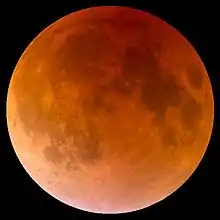February 1970 lunar eclipse
A partial lunar eclipse took place on February 21, 1970. A tiny bite out of the Moon may have been visible at maximum, though just 5% of the Moon was shadowed in a partial eclipse which lasted for 52 minutes and 42 seconds. A shading across the moon from the Earth's penumbral shadow should have been visible at maximum eclipse.[1]
| Partial Lunar Eclipse February 21, 1970 | |
|---|---|
| (No photo) | |
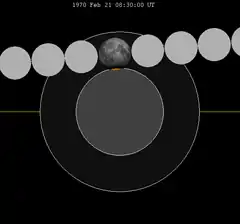 The moon passes west to east (right to left) across the Earth's umbral shadow, shown in hourly intervals. | |
| Series | 113 (61 of 71) |
| Duration (hr:mn:sc) | |
| Partial | 4:58:37.5 |
| Penumbral | 52:42.4 |
| Contacts | |
| P1 | 06:00:45.3 UTC |
| U1 | 08:03:45.1 |
| Greatest | 08:30:03.4 |
| U4 | 08:56:27.5 |
| P4 | 10:59:22.8 |
Visibility

Relation to other lunar eclipses
Lunar year series
| Lunar eclipse series sets from 1969–1973 | ||||||||
|---|---|---|---|---|---|---|---|---|
| Ascending node | Descending node | |||||||
| Saros | Date Viewing |
Type Chart |
Gamma | Saros | Date Viewing |
Type Chart |
Gamma | |
| 108 | 1969 Aug 27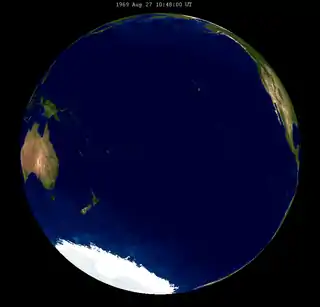 |
Penumbral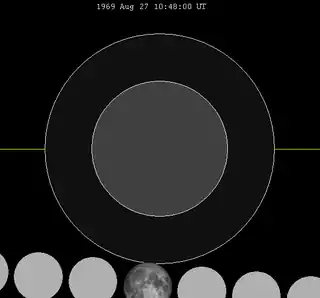 |
-1.54066 | 113 | 1970 Feb 21 |
Partial |
0.96198 | |
| 118 | 1970 Aug 17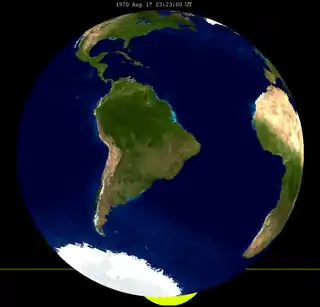 |
Partial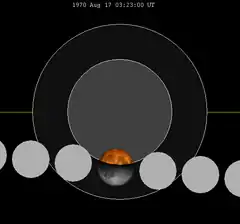 |
-0.80534 | 123 | 1971 Feb 10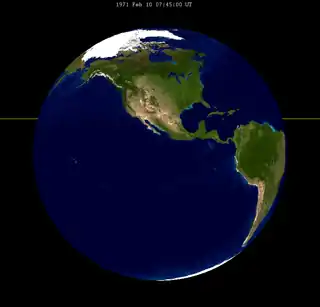 |
Total |
0.27413 | |
| 128 | 1971 Aug 6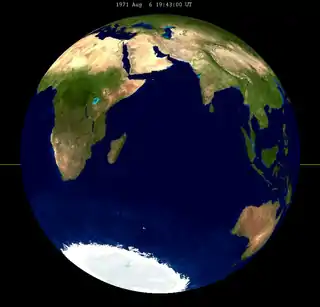 |
Total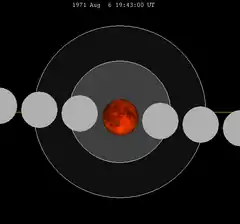 |
-0.07944 | 133 | 1972 Jan 30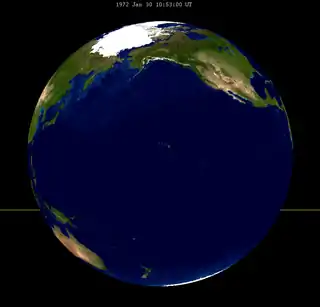 |
Total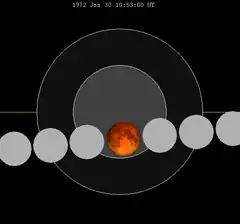 |
-0.42729 | |
| 138 | 1972 Jul 26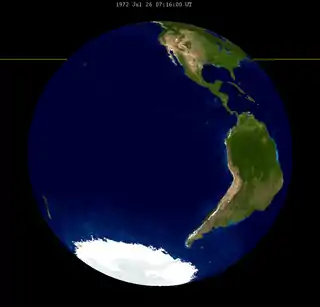 |
Partial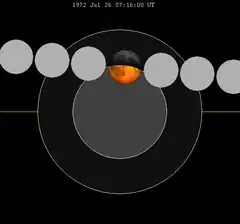 |
0.71167 | 143 | 1973 Jan 18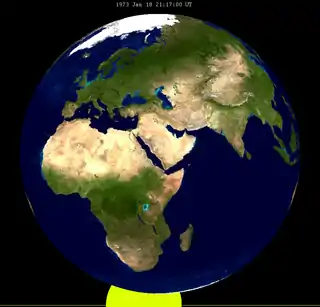 |
Penumbral |
-1.08446 | |
| 148 | 1973 Jul 15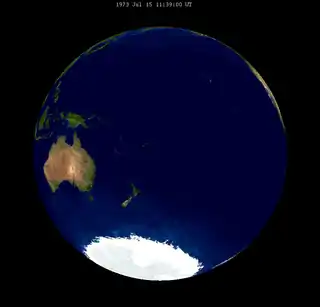 |
Penumbral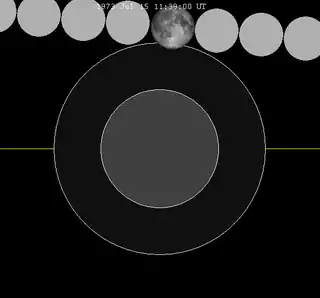 |
1.51782 | |||||
| Last set | 1969 Sep 25 | Last set | 1969 Apr 2 | |||||
| Next set | 1973 Jun 15 | Next set | 1973 Dec 10 | |||||
Metonic cycle
This is the third of five Metonic lunar eclipses.
The Metonic cycle repeats nearly exactly every 19 years and represents a Saros cycle plus one lunar year. Because it occurs on the same calendar date, the earth's shadow will in nearly the same location relative to the background stars.
| Descending node | Ascending node | |||||
|---|---|---|---|---|---|---|
| Saros | Date | Type | Saros | Date | Type | |
| 103 | 1951 Feb 21.88 | Penumbral | 108 | 1951 Aug 17.13 | Penumbral | |
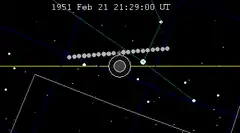 |
 | |||||
| 113 | 1970 Feb 21.35 | Partial | 118 | 1970 Aug 17.14 | Partial | |
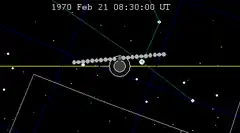 |
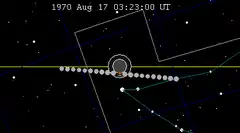 | |||||
| 123 | 1989 Feb 20.64 | Total | 128 | 1989 Aug 17.13 | Total | |
 |
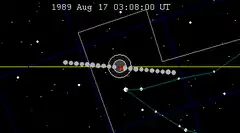 | |||||
| 133 | 2008 Feb 21.14 | Total | 138 | 2008 Aug 16.88 | Partial | |
 |
 | |||||
| 143 | 2027 Feb 20.96 | Penumbral | 148 | 2027 Aug 17.30 | Penumbral | |
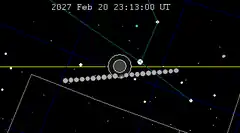 |
 | |||||
Half-Saros cycle
A lunar eclipse will be preceded and followed by solar eclipses by 9 years and 5.5 days (a half saros).[2] This lunar eclipse is related to two total solar eclipses of Solar Saros 120.
| February 15, 1961 | February 26, 1979 |
|---|---|
 |
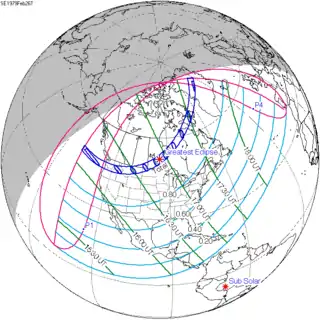 |
See also
- List of lunar eclipses
- List of 20th-century lunar eclipses
Notes
- Saros series 113
- Mathematical Astronomy Morsels, Jean Meeus, p.110, Chapter 18, The half-saros

